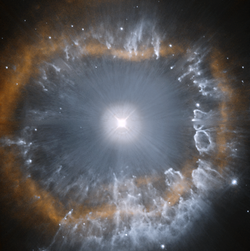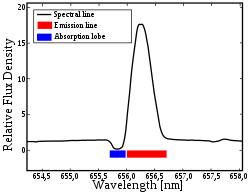
Back Ligsterk blou veranderlike Afrikaans متغير أزرق مضيء Arabic Variable lluminosa azul AST Variable lluminosa blava Catalan Leuchtkräftiger Blauer Veränderlicher German Luminous blue variable English Hela blua varia stelo Esperanto Variable luminosa azul Spanish Izar aldakor urdin argitsu Basque متغیر آبی درخشان Persian


Luminous blue variables (LBVs) are massive evolved stars.[1] They show unpredictable and sometimes dramatic variations in their spectra and their brightness.
These unstable supergiants or hypergiants are also known as S Doradus variables. S Doradus is one of the brightest stars of the Large Magellanic Cloud.
LBVs are extraordinarily rare with just 20 listed in the General Catalogue of Variable Stars as SDor,[2] and some of these are no longer considered to be LBVs.
In their "quiescent" state they are typically B-type stars, occasionally slightly hotter, with unusual emission lines. They are found in a region of the Hertzsprung–Russell diagram known as the S Doradus instability strip. They are the least luminous have a temperature around 10,000 K and a luminosity about 250,000 times the Sun. The most luminous have a temperature around 25,000 K and a luminosity over a million times the Sun. These are some of the most luminous of all stars.
Their relationship to supernovae is unclear.[3]
- ↑ 'Evolved' in this case means some millions of years old.
- ↑ "GCVS Variability Types". General Catalogue of Variable Stars @ Sternberg Astronomical Institute, Moscow, Russia. 2009. Retrieved 2010-11-24.
- ↑ Groh J.H; Meynet G. & Ekström S. 2013. Massive star evolution: luminous blue variables as unexpected supernova progenitors. Astronomy & Astrophysics 550: L7. [1]